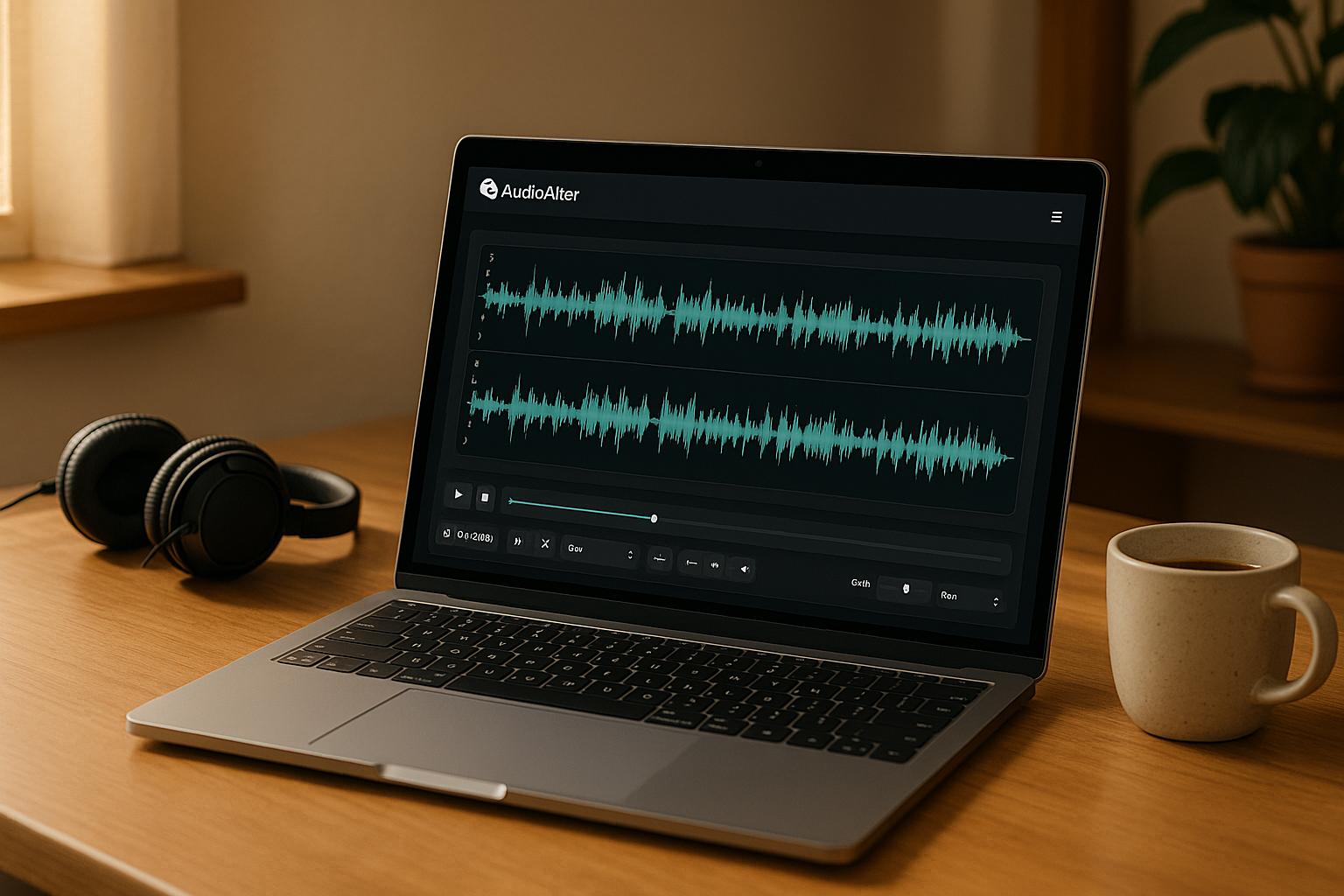Looking to simplify your daily tasks? August 2025 has introduced a range of AI-powered tools designed to save time and improve productivity. From smarter scheduling to automated meeting insights, these apps are built to handle repetitive tasks and help you focus on what matters. Here's a quick look at what you can expect:
- ChatGPT Enterprise Plus: Advanced document analysis and collaboration for teams.
- Notion AI Workspace: Automates task creation and organizes meeting notes.
- Motion Pro: Optimizes your schedule for better time management.
- Reclaim.ai: Balances work and personal time with predictive scheduling.
- Fireflies.ai: Transcribes and summarizes meetings for easy follow-ups.
These tools integrate with popular platforms like Microsoft 365, Google Workspace, and Slack, making them easy to incorporate into your existing workflow. Whether you're managing projects, writing emails, or organizing tasks, there's a tool here to help you work smarter. Start exploring these apps today to see how they can make your workday more efficient.
These 13 AI Tools Will Save You 1,000 Hours in 2025
What Makes an AI App Worth Using in 2025?
AI apps today are all about solving real problems and making work easier. The best ones offer clear, measurable benefits - helping professionals tackle challenges and streamline their workflows. But what sets a truly useful AI app apart? It’s all about how well it fits into your daily work, how seamlessly it integrates with your tools, and how seriously it takes data security and privacy.
Standards for Choosing Top AI Tools
The most effective AI tools aren’t just about fancy features - they’re about making your life easier. They use advanced machine learning to handle complex tasks like analyzing data, creating content, or managing customer interactions, all through user-friendly interfaces.
What makes a tool stand out? Seamless integration with platforms like Microsoft 365 or Google Workspace is key. Add robust security measures, such as end-to-end encryption and compliance with industry standards, and you’ve got a winner.
Another hallmark of a great AI app is its ability to deliver clear productivity gains. Whether it’s saving hours on repetitive tasks or improving the quality of your work, the best tools make a noticeable difference.
And let’s not forget customer support and updates. The tech world moves fast, and the best apps evolve with it - listening to user feedback and rolling out improvements to stay relevant and useful.
These qualities don’t just define a good AI app - they directly contribute to better workflows and more efficient workdays.
Why Workflow Improvement Stays Important
When an AI app fits seamlessly into your workflow, the benefits are immediate and tangible.
For starters, automating repetitive tasks like email sorting, data entry, report creation, and scheduling lets you focus on what really matters. It’s like having a virtual assistant to handle the busywork.
AI tools also shine when it comes to decision-making. By processing massive amounts of data and delivering actionable insights, they help professionals spot trends and make smarter, faster choices.
Another big win? Reducing context switching. The best AI apps work directly within your existing systems, offering suggestions and automation without forcing you to change how you already work.
Scalability is another critical factor. High-quality AI tools grow with you, adapting to larger teams and heavier workloads without missing a beat.
Finally, these tools help maintain accuracy and consistency. By minimizing errors and upholding quality standards, they ensure that even as your workload increases, your work remains top-notch.
Top AI Productivity Apps Released in August 2025
August 2025 has brought a fresh wave of AI-powered productivity tools, reshaping workflows for professionals across the United States. These apps address common challenges like managing overflowing inboxes and coordinating complex projects, using smart automation to make work smoother and more efficient.
Best AI Tools to Try Now
ChatGPT Enterprise Plus
This version of ChatGPT is tailored for workplace needs, offering advanced features like document analysis, real-time collaboration, and integration with popular team platforms. It’s designed to assist with drafting emails, analyzing reports, and conducting research quickly and effectively.
Notion AI Workspace
Notion's latest AI update enhances project and knowledge management. It suggests content intelligently and creates tasks automatically from meeting notes, helping teams stay organized while syncing seamlessly with other productivity tools.
Motion Pro
Motion Pro is a smart calendar and task manager that adapts to your work habits. It schedules tasks, meetings, and even breaks at optimal times, ensuring your day is structured for maximum productivity.
Reclaim.ai Smart Scheduler
Reclaim.ai helps balance work and personal time with predictive scheduling and habit tracking. It adjusts your daily routine as your schedule changes and works well with popular calendar apps.
Fireflies.ai Meeting Intelligence
Fireflies.ai transforms meetings into actionable insights by providing accurate transcriptions, creating concise summaries, and tracking follow-up tasks. It also archives meetings, making it easy to search and reference past discussions.
These apps don’t just handle basic tasks - they enhance how professionals approach their work, offering smarter ways to stay organized and productive.
Featured Apps List
Eesel AI Knowledge Assistant
This Chrome extension connects to your company’s knowledge base, linking documents and communication tools to provide instant, relevant information. It’s especially helpful for customer support teams and onboarding new employees.
Descript Video Editor
Descript simplifies video editing with AI tools like text-based editing, automatic transcription, and voice cloning. Whether you’re creating training videos or marketing content, it makes professional-quality editing accessible to everyone.
Grammarly Business AI
Grammarly’s business-focused AI now includes advanced tone detection and ensures consistency with your brand’s voice. It integrates with email and document tools to help you write with clarity and professionalism.
ClickUp AI Project Assistant
ClickUp’s AI assistant takes project management to the next level by creating timelines, assigning tasks based on team capacity, and spotting potential bottlenecks. It’s a game-changer for project managers juggling multiple responsibilities.
Todoist AI Task Manager
Using natural language processing, Todoist makes task management easier. It interprets detailed task descriptions, categorizes work items, and suggests smart scheduling, making it ideal for individuals and small teams.
App Comparison Chart
Here’s a quick overview of the strengths and integrations of these standout apps:
| App Name | Key Strength | Best For | Integration Support |
|---|---|---|---|
| ChatGPT Enterprise Plus | Document analysis & collaboration | Professional communication & research | Major team platforms |
| Notion AI Workspace | Content suggestions & automated tasks | Project coordination & knowledge management | Popular productivity tools |
| Motion Pro | Smart scheduling | Optimized calendar management | Calendar and project management apps |
| Reclaim.ai Smart Scheduler | Predictive scheduling & habit tracking | Work-life balance | Leading calendar platforms |
| Fireflies.ai Meeting Intelligence | Meeting transcription & action items | Meeting follow-ups & organization | Video conferencing tools |
| Eesel AI Knowledge Assistant | Quick access to company knowledge | Customer support & onboarding | Chrome extension with knowledge base links |
| Descript Video Editor | Text-based video editing | Training videos & marketing content | Cloud storage & social platforms |
| Grammarly Business AI | Tone detection & brand consistency | Professional communication | Email & document editing tools |
| ClickUp AI Project Assistant | Smart project planning | Project management | Workflow applications |
| Todoist AI Task Manager | Natural language task processing | Individual & small team productivity | Cross-platform integrations |
sbb-itb-212c9ea
How to Add AI Apps to Your Workflow
Bringing AI tools into your daily routine isn't just about downloading some apps and hoping they work magic. To truly make a difference in your productivity, you need a clear plan for choosing, implementing, and fine-tuning these tools.
How to Pick the Right Tools
Start by taking a close look at your current workflow. Identify tasks that eat up too much time, slow things down, or are prone to errors. For example, if managing emails or scheduling meetings is draining your day, it might be time to explore tools designed specifically for those tasks.
When evaluating AI tools, don’t just focus on the price tag. Instead, consider the value they bring to your workflow. A tool that saves hours of work each week can often justify its subscription cost.
To make your search easier, use the AI Apps directory. This resource offers over 1,000 curated tools, neatly categorized by use case and pricing. Whether you need help with text generation or video editing, you can filter options to find tools that fit both your needs and your budget.
Compatibility is another critical factor. Make sure the AI solution you choose integrates smoothly with the software you already use, like your favorite productivity suites or collaboration platforms. The last thing you want is a tool that creates more problems than it solves.
Once you've picked the right app, the next step is setting it up and making it work seamlessly within your workflow.
Setting Up and Using AI Solutions
Most AI tools offer free trials, usually lasting a few weeks. Use this time to test how the tool performs with real tasks in your workflow. This trial period is your chance to see if the tool delivers on its promises before committing to a subscription.
Rather than rolling out the tool to your entire team right away, start small. Launch a pilot program with a few team members. This lets you identify any hiccups, adjust workflows, and create best practices without disrupting everyone’s work. During this phase, document common questions and solutions to make future training smoother.
If you’re transitioning from an older tool, plan your data migration carefully. Export your existing data in compatible formats and set clear protocols to ensure nothing gets lost or corrupted. To avoid major disruptions, schedule migrations during quieter periods when workloads are lighter.
Training is another key step. Tailor your approach based on the technical skills of your team. Create training materials that focus on the features most relevant to each role, and run hands-on sessions using real-world scenarios. This ensures everyone gets comfortable with the tool and understands how it fits into their daily responsibilities.
When setting up automations, start small. Begin with simple tasks like sorting emails or transcribing meeting notes. Once you’re confident, you can move on to more complex workflows that tackle multi-step processes and save even more time.
Tracking Results and Long-Term Success
Once the tool is up and running, it’s important to measure its impact. Start by setting baseline productivity metrics before implementation. Track things like how long tasks take, error rates, and project delivery times. Then, compare these numbers after the tool has been in use for a while. For instance, you might notice a drop in average email response times, giving you concrete evidence of the tool’s effectiveness.
Keep an eye on how your team is using the tool. Many AI apps include built-in analytics that show which features are being used most and where people might need extra support. This data can help you fine-tune your training efforts and ensure the tool is being used to its full potential.
To assess whether the tool is worth the investment, weigh the subscription cost and implementation time against the productivity gains. If the time saved outweighs the expense, you’ll know the tool is delivering value.
Data security is another crucial consideration. As AI tools handle sensitive information, make sure they comply with relevant U.S. regulations like SOX or HIPAA. Regularly review their encryption standards, data processing methods, and access controls to keep your business information safe.
For long-term success, don’t let your setup stagnate. Periodically review how the tool is performing and adjust configurations as your needs evolve. Regular check-ins can reveal which automations are consistently helping, where additional training might be needed, and how to scale the tool as your team grows. This ongoing effort ensures your AI solutions continue to deliver value over time.
Conclusion: Start Using These AI Apps Today
August 2025 has brought a wave of AI apps designed to simplify repetitive tasks, speed up decision-making, and enhance team collaboration. These tools have the power to streamline your workflow and make teamwork more efficient.
Key Highlights from August 2025's AI Releases
This month introduced AI tools that tackle common workflow challenges head-on. The focus is on practicality and easy integration, ensuring these apps fit smoothly into your existing systems. By automating mundane tasks, they free up time for more strategic and creative work. Now is the perfect moment to explore how these apps can make a difference in your day-to-day operations.
How to Get Started
To make the most of these advancements, start by identifying an AI app that addresses your specific workflow needs - whether it's managing emails, coordinating projects, or automating data processes.
- Take advantage of free trials to test the tools in real-world scenarios.
- Gather feedback from your team to ensure the app meets your needs effectively.
For ongoing exploration of new tools, check out the AI Apps directory. With over 1,000 curated options categorized by use case and budget, the platform's advanced filters make it easy to find the perfect match for your requirements.
August 2025 has shown that the best tools are those that integrate effortlessly into your routine while delivering clear, measurable results. Start using these apps today and see how they can transform your workflow.
FAQs
How do I choose the right AI app to improve my workflow?
To find the right AI app for your workflow, start by pinpointing your specific needs and objectives. Think about factors like how easy it is to use, whether it integrates well with your current tools, and features designed specifically for your industry. Apps with pre-built templates or customization options can make setup smoother and ensure they work well with your existing systems.
It's also important to consider the app's ability to grow with your needs and tackle any unique challenges in your field. Trying out a demo or free trial can give you a clearer picture of how well the app fits into your routine. By keeping these factors in mind, you’ll be better equipped to choose a tool that boosts productivity and simplifies your workflow.
How can I ensure data security when integrating AI tools into my systems?
To keep your data secure while using AI tools, focus on key strategies like data encryption, strict access controls, and provenance tracking to protect sensitive information. It's also essential to routinely check for potential threats and keep your systems updated to address any new vulnerabilities that might arise.
Look to guidance from respected U.S. organizations such as CISA and NSA. They recommend measures like securing your data supply chain, identifying malicious activities, and staying compliant with changing regulations. These steps can help you protect your operations while making the most of AI technology.
How can AI apps like Motion Pro and Reclaim.ai help improve work-life balance?
AI tools like Motion Pro and Reclaim.ai are here to make juggling work and personal life a little easier. These apps simplify your schedule and help cut down on unnecessary stress.
Reclaim.ai takes care of repetitive tasks and even schedules breaks for you, making sure you have time set aside for personal activities. Meanwhile, Motion Pro adjusts your calendar in real-time based on task priorities. This means you can avoid overloading your day and stay focused on what truly matters.
By handling scheduling and prioritization for you, these tools keep you productive while making room for relaxation and self-care.



